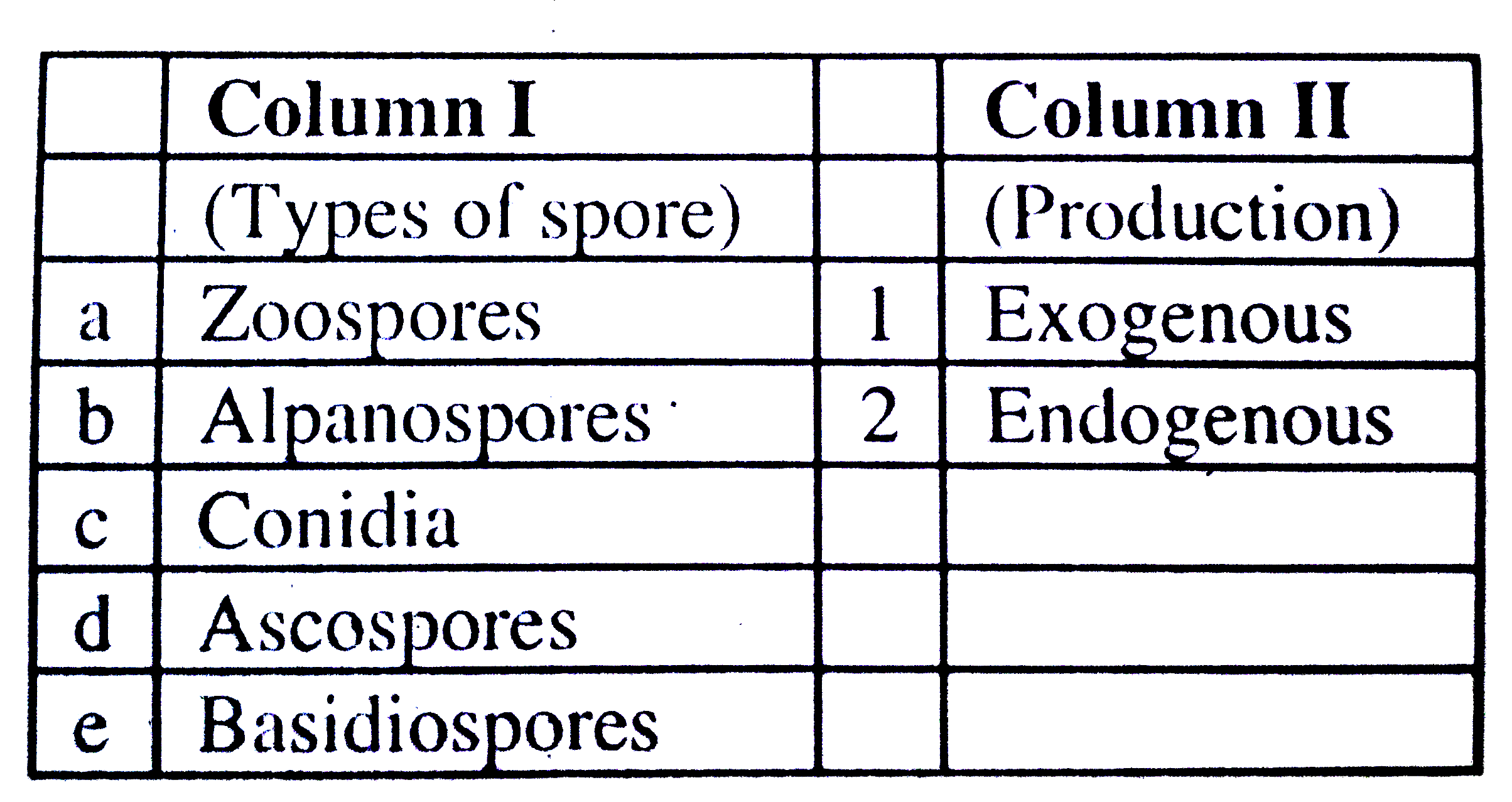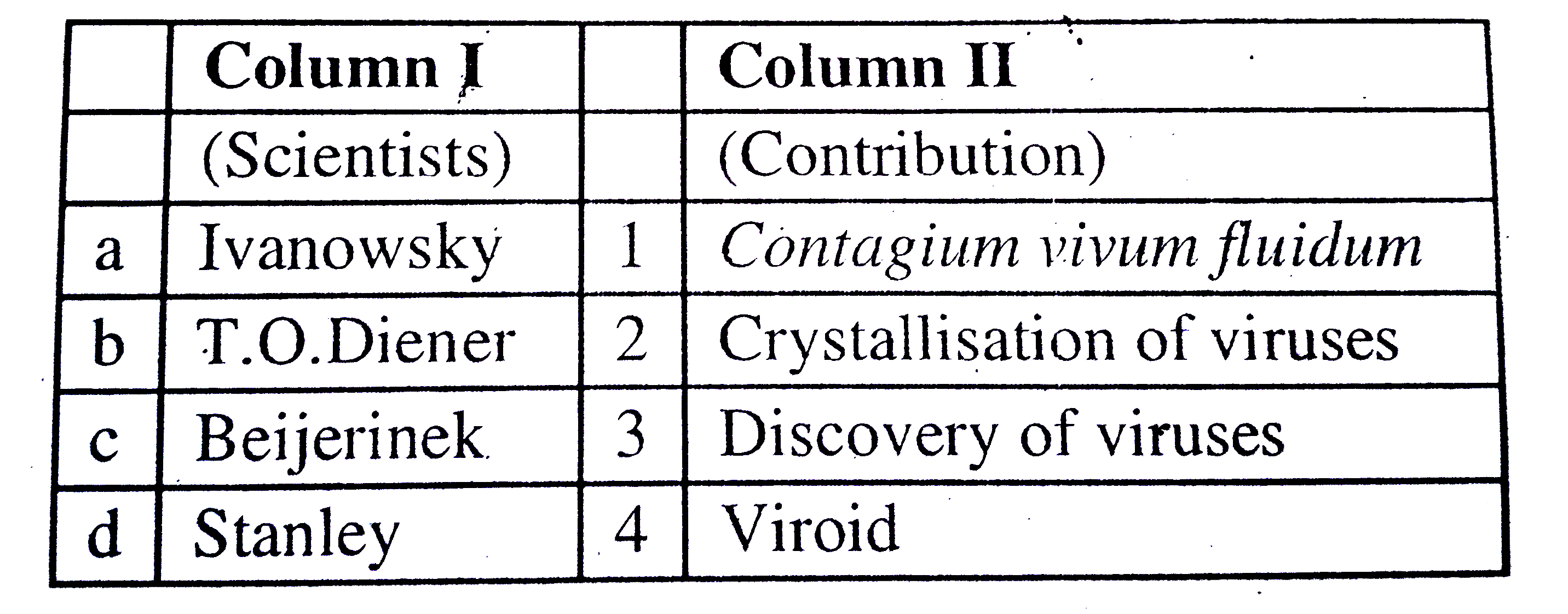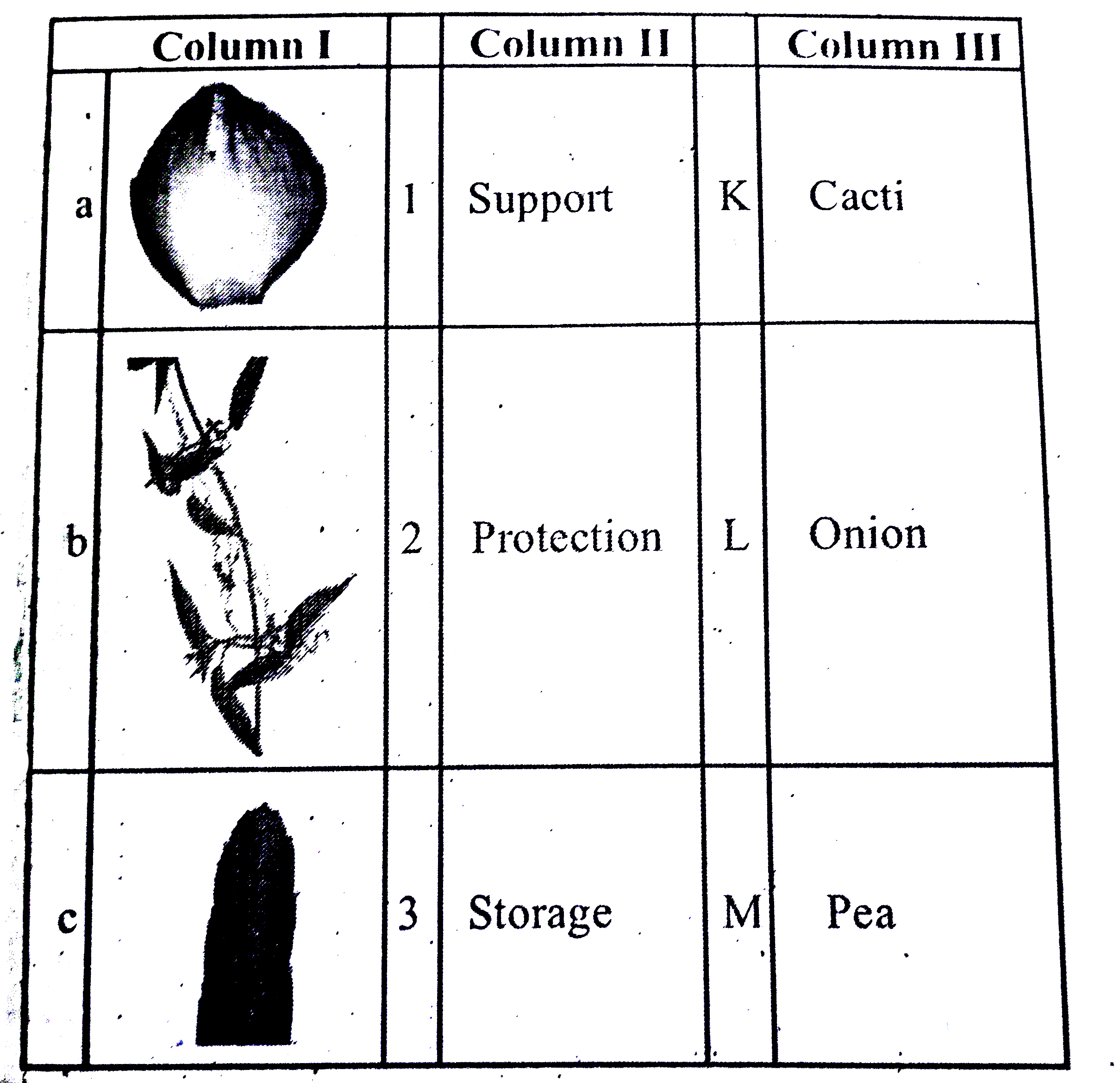Match the following and choose the correct combination from the options.
Column - IColumn - IIA Potassium(i) Constituent of ferredoxinB Sulphur(ii) Involved in stomatal movement C Molybdenum(iii) Auxin synthesisD Zinc(iv) Component of nirogenase
A -ii, B - i, C -iv , D - iii
A -i, B - ii, C -iii , D - iv
A -iv, B - iii, C -ii, D - i
A -ii, B - iii, C -iv , D - i
The correct Answer is:A
To solve the matching question, we need to pair each element from Column I with the correct description from Column II. Let's analyze each element one by one.
Step 1: Analyze Potassium
- Potassium (K) is known to be involved in the turgor movement of guard cells, which regulates stomatal opening and closing.
- Match: Potassium → (ii) Involved in stomatal movement.
Step 2: Analyze Sulphur
- Sulphur (S) is a key component of certain amino acids and proteins, and it is also a constituent of ferredoxin, which is involved in electron transport during photosynthesis.
- Match: Sulphur → (i) Constituent of ferredoxin.
Step 3: Analyze Molybdenum
- Molybdenum (Mo) is an essential micronutrient that plays a crucial role in nitrogen fixation and is a component of the enzyme nitrogenase.
- Match: Molybdenum → (iv) Component of nitrogenase.
Step 4: Analyze Zinc
- Zinc (Zn) is required for the synthesis of auxins, which are plant hormones that regulate growth.
- Match: Zinc → (iii) Auxin synthesis.
Final Matching
Now, we can summarize the matches:
- A (Potassium) → (ii) Involved in stomatal movement
- B (Sulphur) → (i) Constituent of ferredoxin
- C (Molybdenum) → (iv) Component of nitrogenase
- D (Zinc) → (iii) Auxin synthesis
Correct Combination
The correct combination is:
- A - (ii)
- B - (i)
- C - (iv)
- D - (iii)
Conclusion
The right answer to the question is option number one.
---
- Potassium (K) is known to be involved in the turgor movement of guard cells, which regulates stomatal opening and closing.
- Match: Potassium → (ii) Involved in stomatal movement.
- Sulphur (S) is a key component of certain amino acids and proteins, and it is also a constituent of ferredoxin, which is involved in electron transport during photosynthesis.
- Match: Sulphur → (i) Constituent of ferredoxin.
- Molybdenum (Mo) is an essential micronutrient that plays a crucial role in nitrogen fixation and is a component of the enzyme nitrogenase.
- Match: Molybdenum → (iv) Component of nitrogenase.
- Zinc (Zn) is required for the synthesis of auxins, which are plant hormones that regulate growth.
- Match: Zinc → (iii) Auxin synthesis.
Now, we can summarize the matches:
- A (Potassium) → (ii) Involved in stomatal movement
- B (Sulphur) → (i) Constituent of ferredoxin
- C (Molybdenum) → (iv) Component of nitrogenase
- D (Zinc) → (iii) Auxin synthesis
The correct combination is:
- A - (ii)
- B - (i)
- C - (iv)
- D - (iii)
The right answer to the question is option number one.
Similar Questions
Match the following and choose the correct combination from the options given
Column IColumn II(A)Potassium (i)Constituent of ferredoxin(B)Sulphur(ii)Involved in stomatal movement(C)Molybdenum(iii)Needed in the synthesis of Auxin(D)Zinc(iv)Component of nitogenase
View SolutionMatch the columns I and II, and choose the correct combination from the options given :-

View SolutionMatch the columns I and II, and choose the correct combination from the options given :-

View SolutionMatch the columns I and II, and choose the correct combination from the options given :-

View SolutionMatch the columns I and II, and choose the correct combination from the options given.

View SolutionMatch the columns I and II and choose the correct combination from the option given

View SolutionMatch the columns I and II, and choose the currect combination from the options given :-

View SolutionMatch the column I, II and III and choose the correct combination from the options given :-

View SolutionMatch the columns I and II, and choose the correct oabination from the options given.


View SolutionMatch the columns I, II and III and choose the correct combination from the option given :

View Solution
